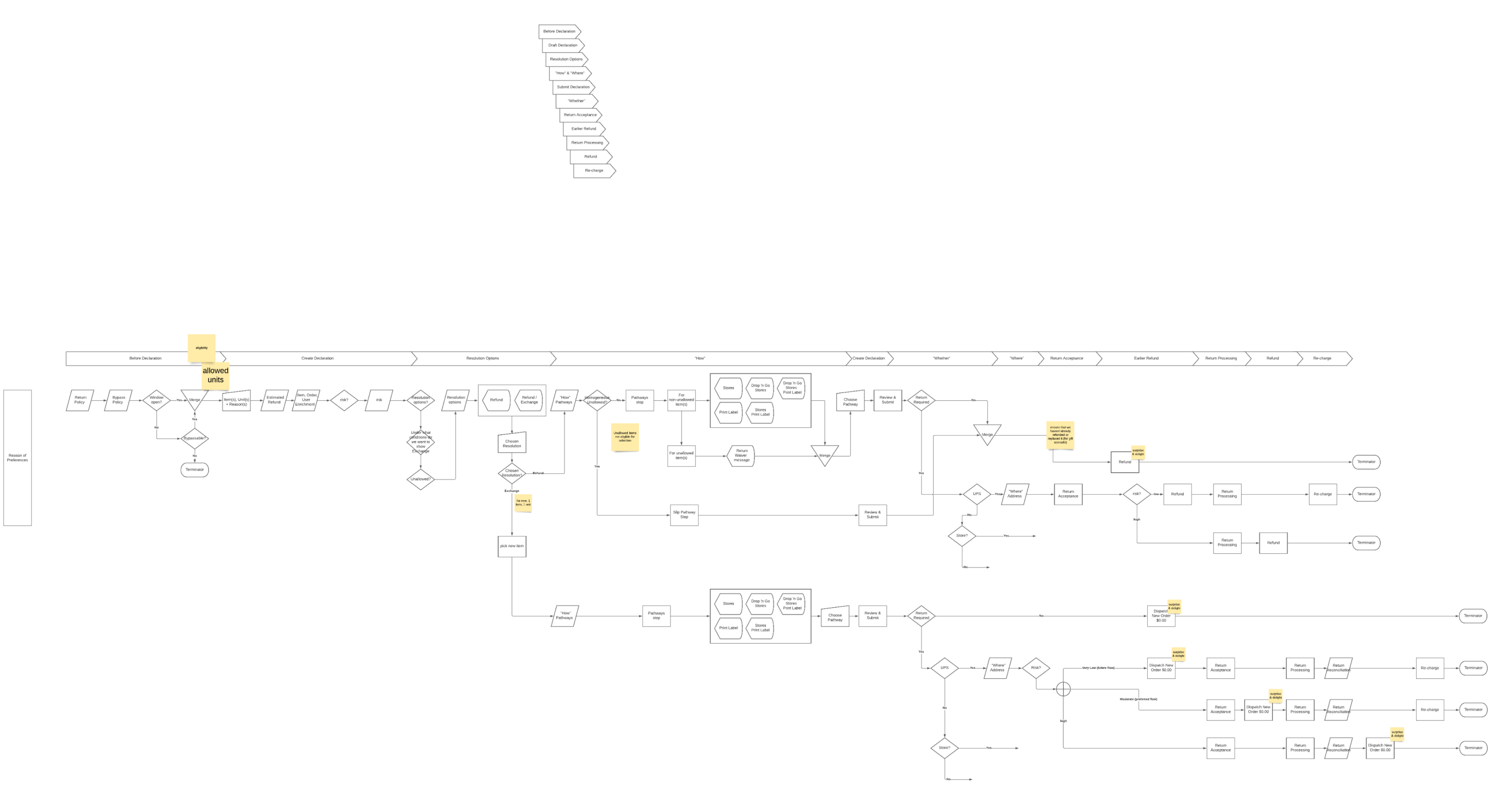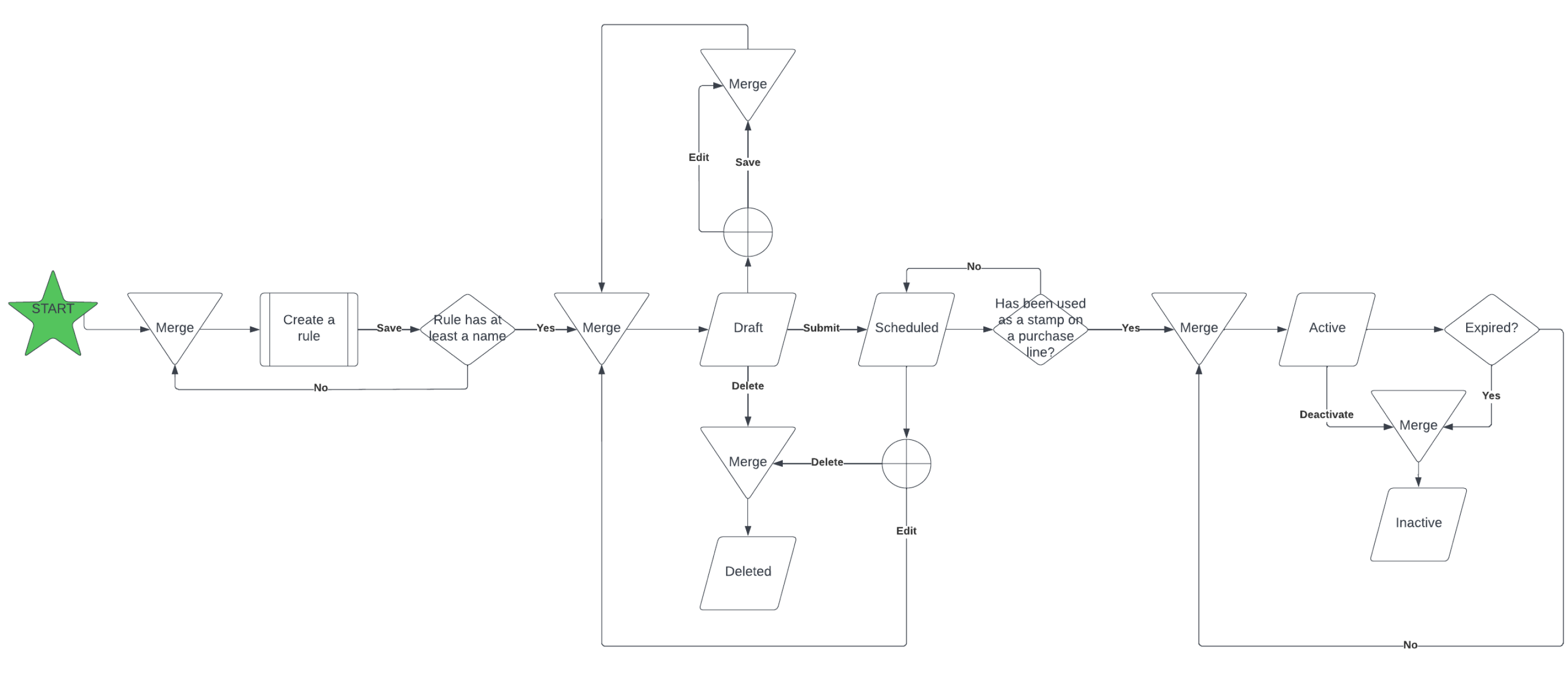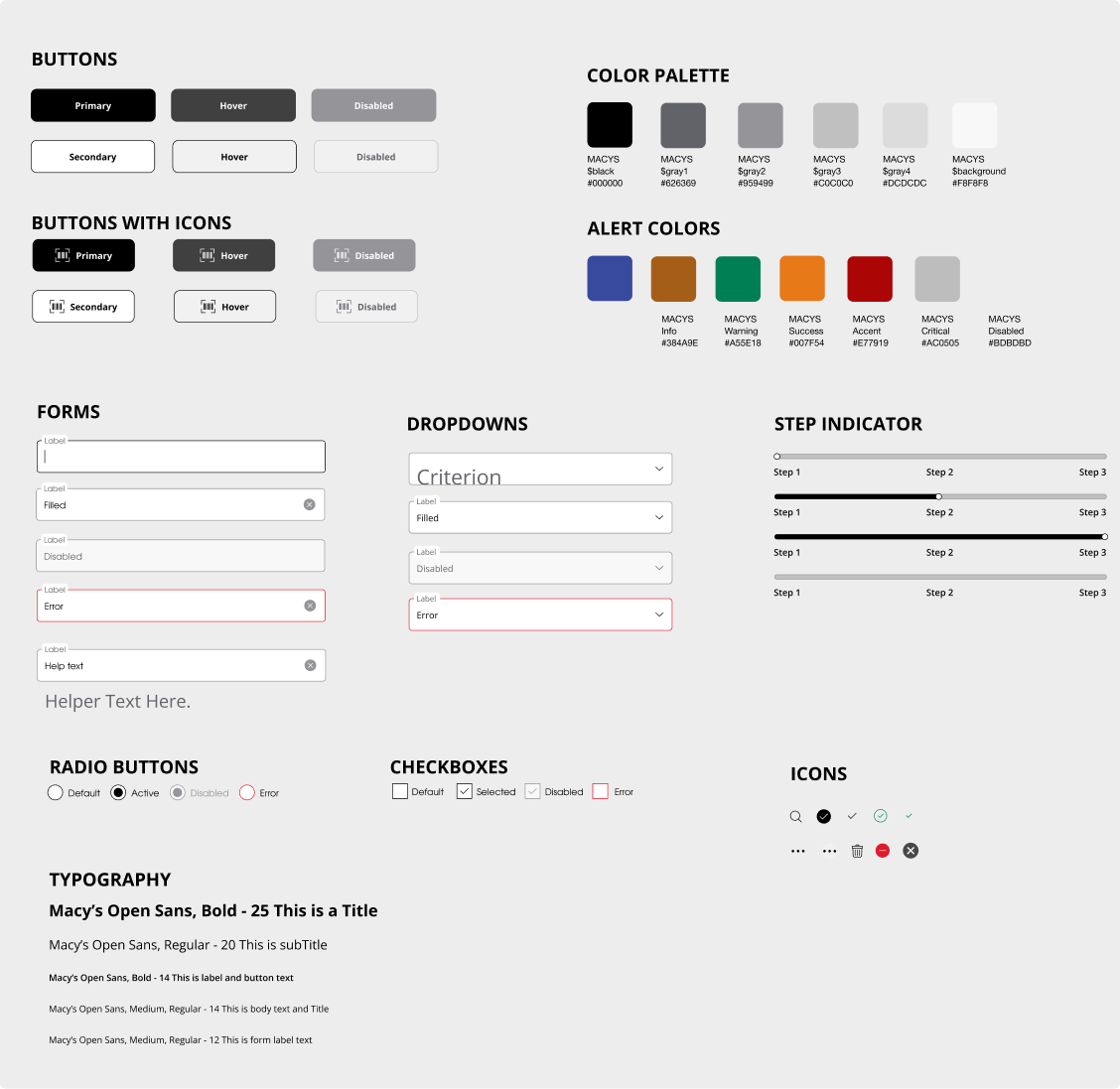Return Policy - Macy's
Macy's return policy domain includes rules and processes for handling returns, rules for eligibility, return channels, special exceptions, and bypass rules. Creating and managing these rules ensures a consistent and efficient return process for customers and supports effective policy enforcement across all channels.
Role
UX/Visual designer
Year
2022-2023
Tools used
Figma, Miro

Overview
The Return Policy Application streamlines the management of Macy's return policies, enhancing transparency and user control.
Key Features:
- Rule Management: Quickly track changes and update rules for consistent enforcement across channels.
- Centralized System: A single location for managing Return Policy and Bypass Rules for Macy's and Bloomingdale's.
- Context-Based Rules: Tailor policies based on user role and organization.
- Authentication and Authorization: Secure access to relevant Bypass Rules.
- End Result: Faster implementation of new rules, improving policy management efficiency.
Problem Statement
Macy's return policies are managed across multiple systems, causing inconsistencies and management challenges for both Macy's and Bloomingdale's. This makes it hard for teams to view, edit, and manage policies consistently. A unified solution is needed to streamline policy management and communication.
The separation of Return Policies and Bypass Rules leads to redundant updates and causes customer frustration due to inconsistent return processes across teams.
The separation of Return Policies and Bypass Rules leads to redundant updates and causes customer frustration due to inconsistent return processes across teams.

Return policies are managed by different systems where colleagues are facing difficulty in managing view, and edit all the return policies across Macy's and Bloomingdale's.
Challenges
Stores and digital platforms faced challenges due to separate systems for managing return policies, leading to inconsistency and inefficiency.
Key Features:
- Lack of Guidance: Neither the point-of-sale (POS) nor digital platforms provide clear return location information, frustrating customers when returns are not accepted.
- Ineffective Communication: Special return policies caused confusion and inconsistent enforcement.
- Managerial override: Different override capabilities between the MSA (Merchandise Services Administration) and POS systems led to uneven policy application.
Distributed systems cause confusion and errors in policy enforcement, resulting in operational delays.
Assumption
If we create a unified application for managing return policies, then users will gain greater transparency and control over both new and existing policies, resulting in a reduced time from conceptualization to implementation of new rules.
Project Goal
User Goal: Allow users to easily add and manage return policy rules.
Business Goal: Allow users to easily add and manage return policy rules.
Business Goal: Allow users to easily add and manage return policy rules.
Sitemap

Return Policy complete flow

Return Policy Life Cycle simplifies navigation and management rules
Branding & Visual Identity
Using Macy’s brand guidelines to define the core design elements helped a faster and more consistent design process throughout the project.

High-Fidelity Mockups & Prototype
The final visual designs were refined with the product owner and stakeholders, improving the visual hierarchy. I worked with the client and design team to ensure the layout met user needs while maintaining consistency and clarity. I then used Figma to digitize the high-fidelity prototype, providing a more accurate brand representation for usability testing.

QA Testing
Participated in biweekly demos and performed end-to-end testing using a test environment. I documented issues in JIRA and assigned them to developers to ensure a seamless experience.
Project Takeaway
This project highlighted the need for a unified return policy system to enhance consistency and efficiency. I learned that a user-centric design, clear communication, and regular meetings with the product owner improved my understanding of the application. Streamlining processes accelerates implementation, and team collaboration brings in diverse perspectives. Finally, using data to identify pain points enables informed decision-making and ongoing user experience improvements. Additionally, involving QA early in the development process is essential for maintaining product quality.
Key Learning
This project highlighted the importance of a single source of truth for return policy rules, which improves efficiency and understanding of end-to-end functionality. A user-centric design, effective communication, and collaboration with stakeholders and product owners are vital for minimizing confusion and aligning goals. Regular stakeholder meetings streamline implementation, and involving QA early in the development process is essential for ensuring product quality.
macy
